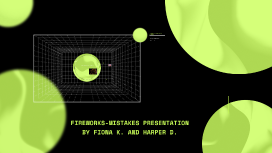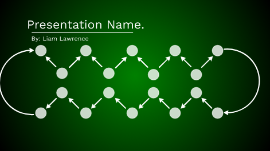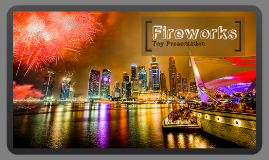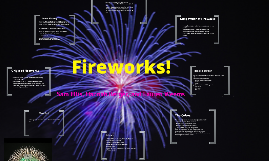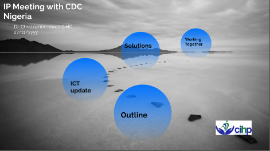Enschede Fireworks Presentation
Transcript: By Rohana Chintakindi and Jacob Cook Enschede Fireworks Explosion- 2000 The Enschede Fireworks was an explosion that took place in a city in the Netherlands called Enschede on May 13, 2000. A fire broke out at SE warehouse and after further invesigtion, 900 kg of fireworks were found placed in 2 containers, (illegally), outside of the warehouse. A fire started in the work area and spread to the fireworks, so a total of 177 tons of fireworks were released. It was felt up to 3,000 kilometers away, 1000 people were injured, 23 people were dead, and 1250 people were left homeless. Damages cost more than 450 million euros. What was the Enschede Fireworks Explosion? What was the Enschede Fireworks Expolosion Arial view of enschede post explosion. No one know what exactly caused the explosion but the fire department claims it was caused by an electrical short circuit. The South East fireworks depot, and the managers of company who were arrested: Rudi Bakker and Willie Pater, were involved. Why did it happen and who was involved? Why did it happen and who was involved? Explosion occurring. Clearly visible fireworks, smoke, fire, and sparks. -Carbon -Copper -Aluminum -Calcium chloride -Sodium nitrate -Barium chloride -Potassium nitrate Potassium nitrate: Chemical- moderately soluble but increases solubility with temperature, transforms from a crystal structure to trigonal system from high temperature, and will release toxic gas if placed in fire. Physical- Odorless, white powder, very powdery Chemical and Physical properties Chemical and Physical properties Substance: Calcium chloride (flakey, white, powder) Substance: Potassium nitrate (powdery, white, crystal-like) Immediate consequences- Explosives cause harsh burns, hazardous to environment, hazardous to people, can cause chain reaction. Long term consequences- Debts for trying to pay for damage, loss of homes, deaths, injuries, and have to rebuild countless buildings Immediate and long term consequences Immediate and long term consequences Consequences of the explosion . Left debris and destroyed infrastructure throughout the city Then the chemical formula is 6KNO3 The Scientific/Common name for potassium nitrate. Saltpetre. Chemical Formula and Scientific name Chemical formula Scientific name Substance: Potassium nitrate in powder Substance: Potassium nitrate in crystal The disaster could have been prevented by storing the fireworks in the proper containers. In the Enschede firework explosion, it says that the containers with electrical radios, roman candles, fuses, bombs, and firework batteries were left in open containers. If the containers weren’t left opened then the explosion probably wouldn’t have happened. How could the disaster be prevented? How could the disaster be prevented? Truck showing the proper symbols to warn people about the chemical A box showing how to store chemicals properly The hazards associated with the chemical are explosive, oxidizer, have health effects, and is an environmental hazard. What hazards were associated with the Chemical. What hazards were associated with this chemical? Explosive Explosive This chemical is not that explosive, but it's still explosive which'll make it a hazard. The GHS symbol for explosion unhealthy unhealthy The chemical will cause irritation to skin and eye. Don't swallow or inhale the chemical. The GHS symbol of health hazard Oxidizer oxidizer This chemical is an oxidizer so this'll release oxygen and accelerates the combustion of other substances The GHS symbol for Oxidizers Environmental hazard Environmental hazard This chemical is unhealthy for the environment because it'll pass off toxic fumes if on fire. The GHS symbol for environmental hazards Osha.gov. (2018). OSHA QUICK CARD: Hazard Communication Standard Pictogram Occupational Safety and Health Administration. [online] Available at: https://www.osha.gov/Publications/HazComm_QuickCard_Pictogram.html [Accessed 11 Sep. 2018]. Jenkins, Beverly. “10 Worst Fireworks Disasters Ever - Fireworks, July 4th, Explosions, Explosives, Disasters, Fire.” Oddee, www.oddee.com/item_98635.aspx Poimenidou, C. and Poimenidou, C. (2018). Enschede, 13 years after Europe's largest explosion - Iamgreek.nl. [online] Iamgreek.nl. Available at: https://www.iamgreek.nl/in-the-netherlands/2013/05/13/enschede,-13-years-after-europes-largest-explosion/ [Accessed 10 Sep. 2018]. https://www.rivm.nl/en/Documents_and_publications/Scientific/Reports/2001/april/Fireworks_tragedy_in_Enschede_The_Netherlands_Measurements_for_concentrations_dispersion_and_deposition_of_harmful_substances_report_of_the_environment_study [Accessed 10 Sep. 2018]. Aria.developpement-durable.gouv.fr. (2018). [online] Available at: https://www.aria.developpement-durable.gouv.fr/wp-content/files_mf/FD_17730enschede2000_ang.pdf [Accessed 10 Sep. 2018]. Compound Interest. (2018). The Chemistry of Fireworks Compound Interest. [online] Available at:







